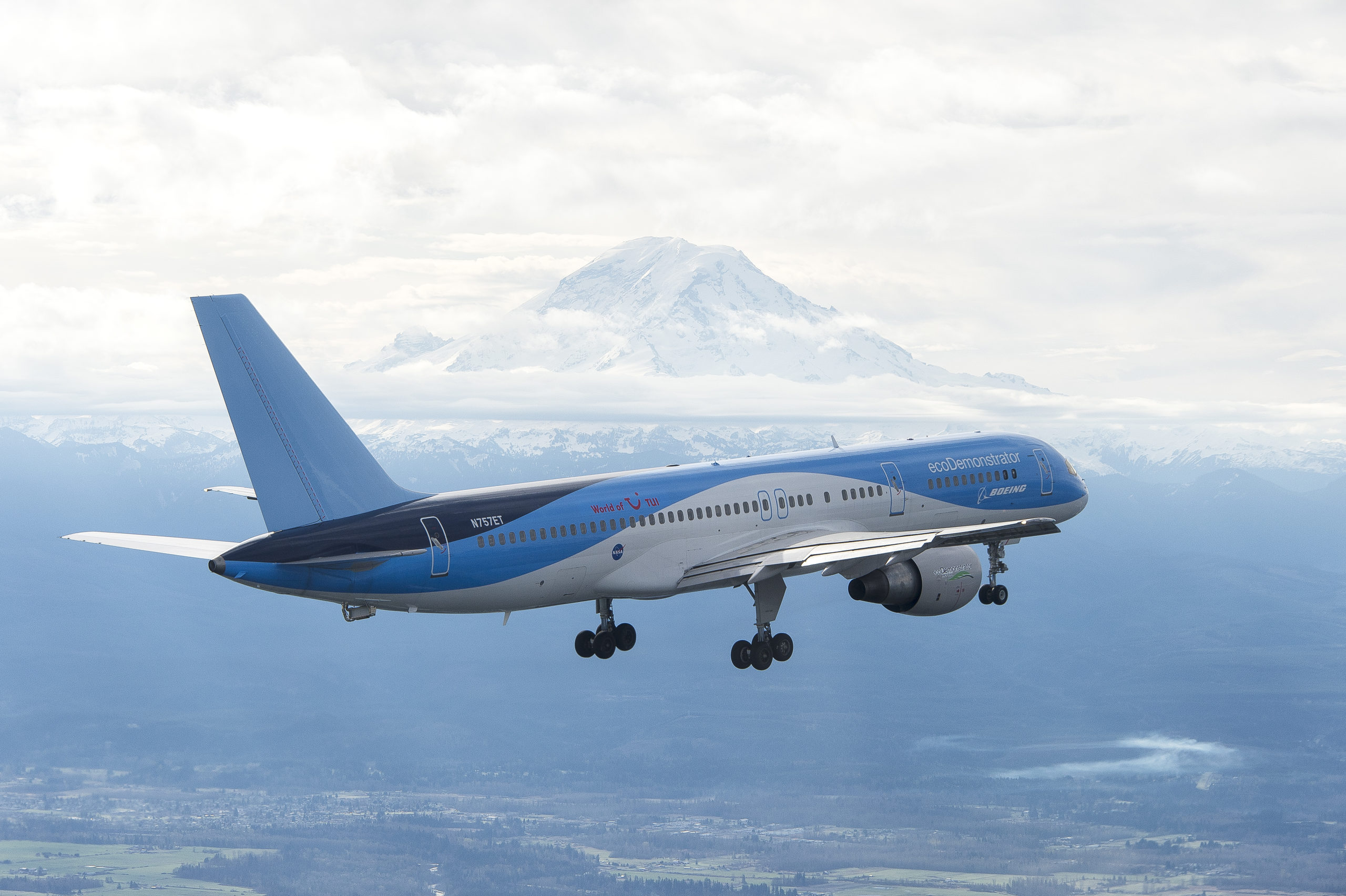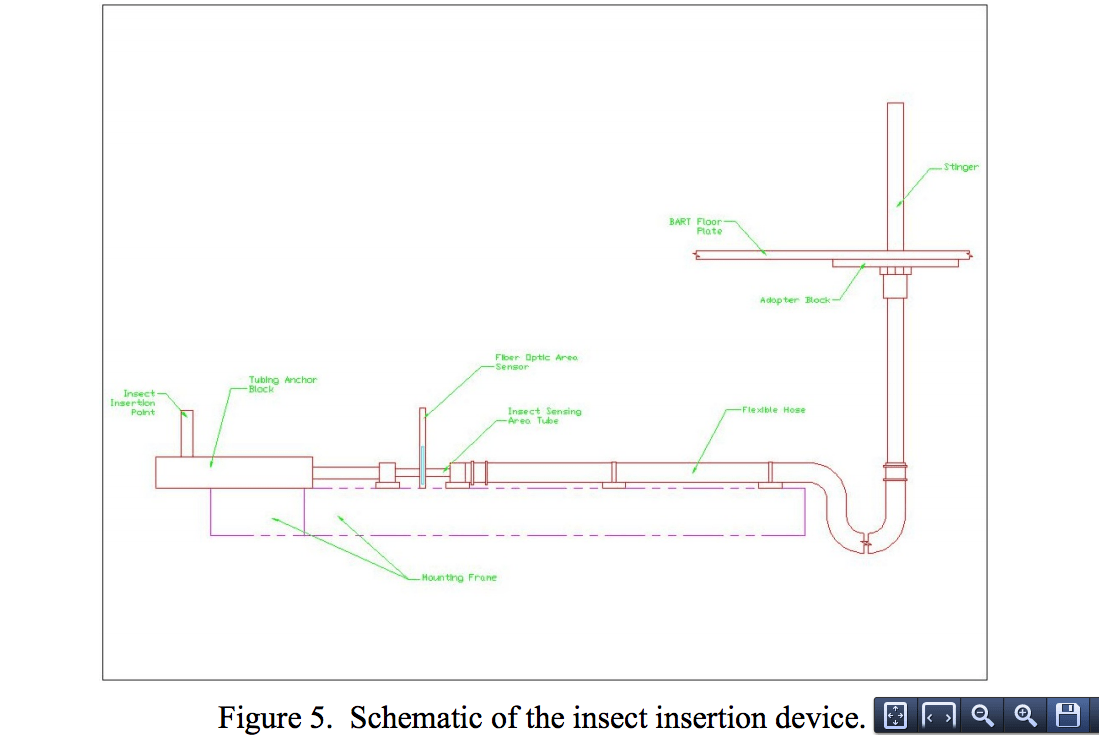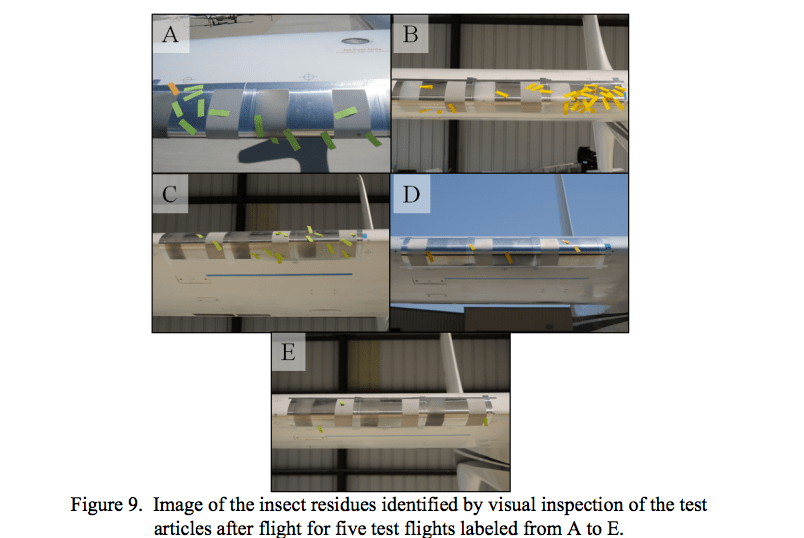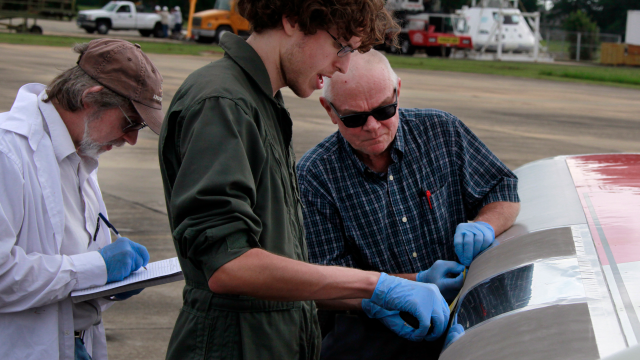Bug guts on your windshield are an inevitable part of life and a reminder of your own fleeting mortality. But they’re also a major drag on the aerodynamics of a car or plane — reducing the fuel efficiency of aeroplanes as much as a whopping 6 per cent, according to NASA.
That’s a major difference in cost, and could amount to millions when tallied across an entire fleet. That’s why, for the past few years, NASA has been working on a chemical coating that could prevent bug guts from getting stuck on the wings of planes and creating unnecessary drag. Though NASA first published a paper on the topic in 2013, it’s now testing five different coatings on a Boeing 757 to find out whether they work.

The retrofitted 757 where the coatings will be tested. Picture: Boeing / John D. Parker.
The name of the project sounds deceptively bureaucratic: Insect Accretion and Mitigation. It turns out that keeping bugs from getting stuck on planes is actually kind of a tough problem — one that’s plagued the aviation industry for decades. The problem isn’t just about creating a hydrophobic surface. The guts themselves are what create the problem, NASA explained a few years ago:
It’s not just water you have to deal with. “Yes, there’s a lot of water in a bug, but there’s also some biological components that actually impart the stickiness, and we have to deal with preventing those from sticking even though we know how to prevent water from sticking,” [Mia Siochi, of the Advanced Materials and Processing Branch at Langley] said.
At Langley, the team says it uses something called a “bug gun” (use your imagination) to shoot bugs at test subjects in a wind tunnel at speeds of 240km/h. Oh, you’d like to see a schematic of this gun? Here you go, courtesy of the study Engineered Surfaces for Mitigation of Insect Residue Adhesion:

Suffice to say, the upcoming tests out in the wild are the result of years of testing and research. Last week, NASA announced it would be running a series of experiments on a 757 that it’s testing a number of other efficiency-oriented design changes on. To create a control group, it will measure how many bugs accumulate on the un-coated wings. Then, it will install five coated panels on the wings to see how they differ.
In the 2013 study, they counted incidences of “adhesion” a bit like a detective counts bullet holes:

Only one question about their methodology remains. How did they pick where to test the coatings? NASA’s Kathy Barnstorff writes that the team “looked for the best bug-infested area in which to flight test the surfaces,” looking at 90 different airports. Out of all the bug-clogged runways in America, which provided the most splatter-y conditions? Shreveport.
[NASA; H/t Engadget, The Verge]
Picture: NASA Langley / David C. Bowman
